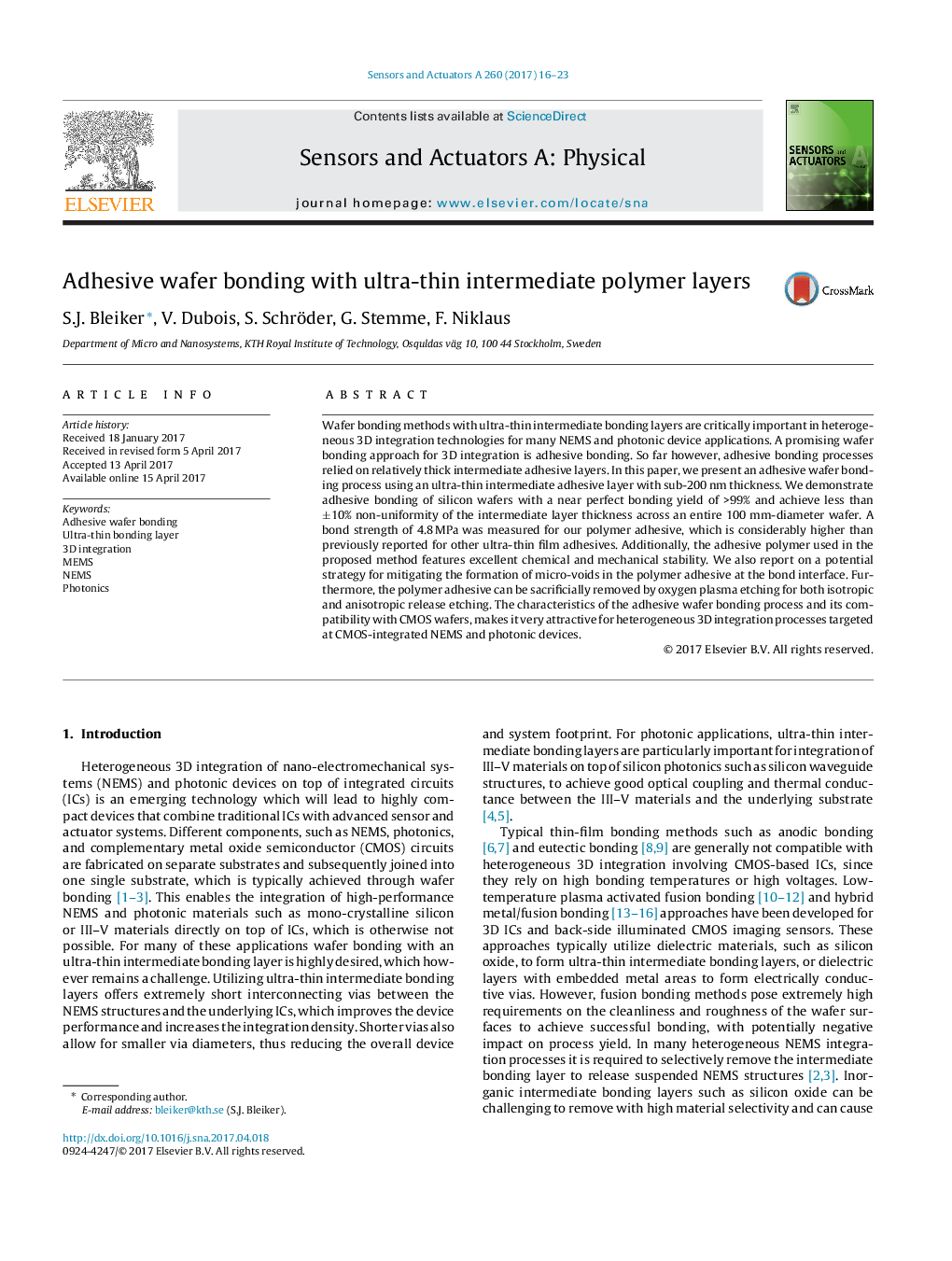| Article ID | Journal | Published Year | Pages | File Type |
|---|---|---|---|---|
| 5008299 | Sensors and Actuators A: Physical | 2017 | 8 Pages |
Abstract
Wafer bonding methods with ultra-thin intermediate bonding layers are critically important in heterogeneous 3D integration technologies for many NEMS and photonic device applications. A promising wafer bonding approach for 3D integration is adhesive bonding. So far however, adhesive bonding processes relied on relatively thick intermediate adhesive layers. In this paper, we present an adhesive wafer bonding process using an ultra-thin intermediate adhesive layer with sub-200 nm thickness. We demonstrate adhesive bonding of silicon wafers with a near perfect bonding yield of >99% and achieve less than ±10% non-uniformity of the intermediate layer thickness across an entire 100 mm-diameter wafer. A bond strength of 4.8 MPa was measured for our polymer adhesive, which is considerably higher than previously reported for other ultra-thin film adhesives. Additionally, the adhesive polymer used in the proposed method features excellent chemical and mechanical stability. We also report on a potential strategy for mitigating the formation of micro-voids in the polymer adhesive at the bond interface. Furthermore, the polymer adhesive can be sacrificially removed by oxygen plasma etching for both isotropic and anisotropic release etching. The characteristics of the adhesive wafer bonding process and its compatibility with CMOS wafers, makes it very attractive for heterogeneous 3D integration processes targeted at CMOS-integrated NEMS and photonic devices.
Keywords
Related Topics
Physical Sciences and Engineering
Chemistry
Electrochemistry
Authors
S.J. Bleiker, V. Dubois, S. Schröder, G. Stemme, F. Niklaus,
